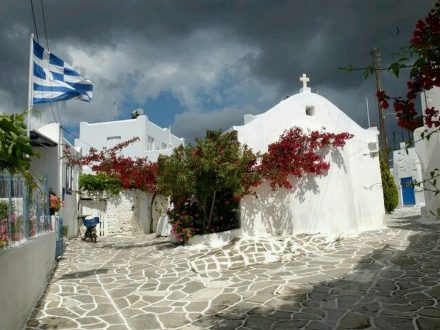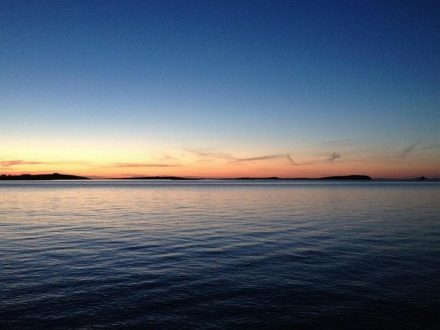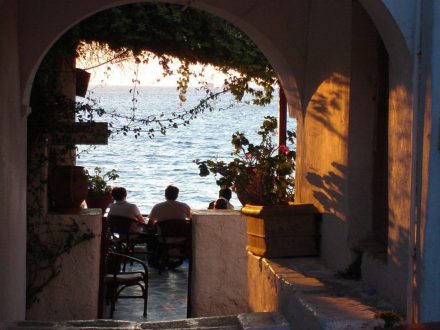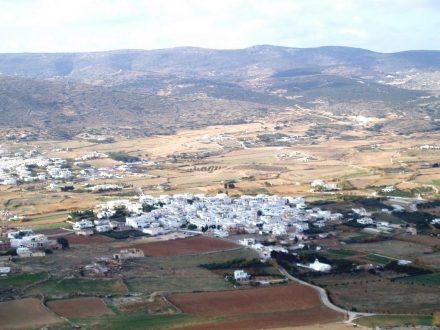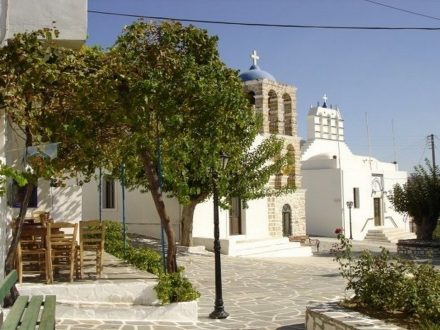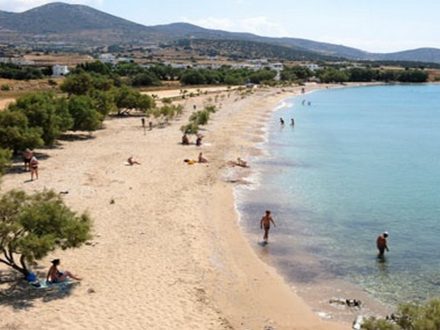
The story that Paros of Parrhasia colonized the island with Arcadians is an etymological fiction of the type that abounds in Greek legend. Ancient names of the island are said to have been Plateia (or Pactia), Demetrias, Strongyli (meaning round, due to the round shape of the island), Hyria, Hyleessa, Minoa and Cabarnis.
The island later received from Athens a colony of Ionians under whom it attained a high degree of prosperity. It sent out colonies to Thasos and Pariumon the Hellespont. In the former colony, which was planted in the 15th or 18th Olympiad, the poet Archilochus, a native of Paros, is said to have taken part. As late as 385 BC the Parians, in conjunction with Dionysius of Syracuse, founded a colony on the Illyrian island of Pharos (Hvar).
In 1204, the soldiers of the Fourth Crusade seized Constantinople and overthrew the Byzantine Empire. Although a residual Byzantine state known as the Empire of Nicaea survived the Crusader onslaught and eventually recovered Constantinople (1261), many of the original Byzantine territories, including Paros, were lost permanently to the crusading powers. Paros became subject to the Duchy of the Archipelago, a fiefdom made up of various Aegean islands ruled by a Venetian duke as nominal vassal of a succession of crusader states. In practice, however, the duchy was always a client state of the Republic of Venice.
In 1537, Paros was conquered by the Ottoman Turks and remained under the Ottoman Empire until the Greek War of Independence (1821–1829). During the Russo-Turkish War (1768–1774) in 1770–1775 Naoussa Bay was the home base for the Russian Archipelago Squadron of Count Alexey Orlov. Under the Treaty of Constantinople (1832), Paros became part of the newly independent Kingdom of Greece, the first time the Parians had been ruled by fellow Greeks for over six centuries. At this time, Paros became the home of a heroine of the nationalist movement, Manto Mavrogenous, who had both financed and fought in the war for independence. Her house, near Ekatontapiliani church, is today a historical monument.








